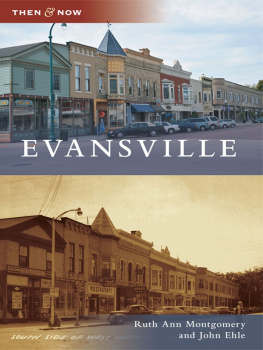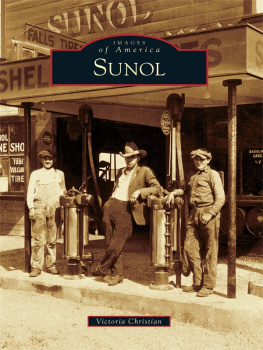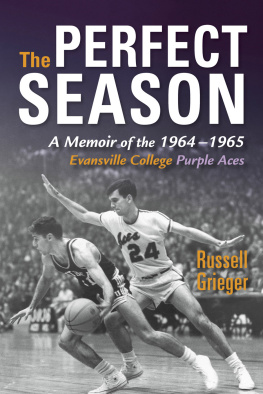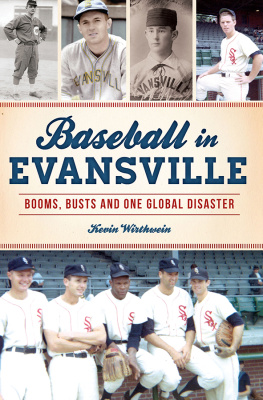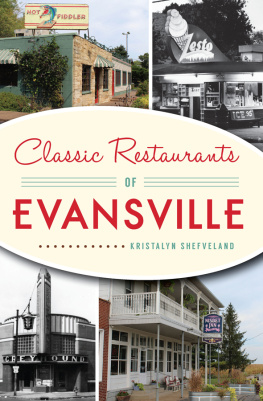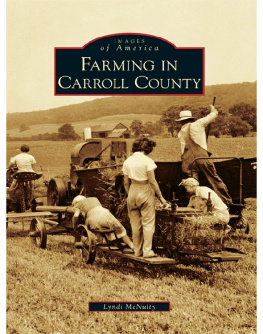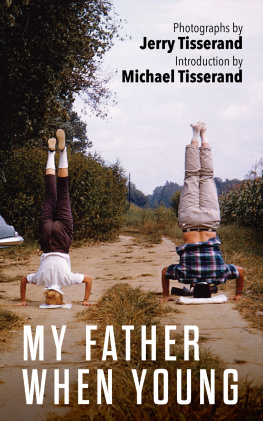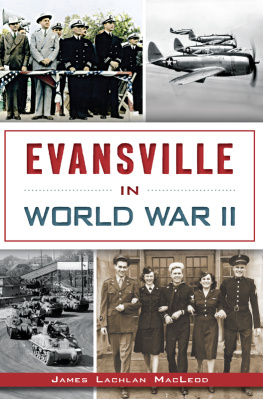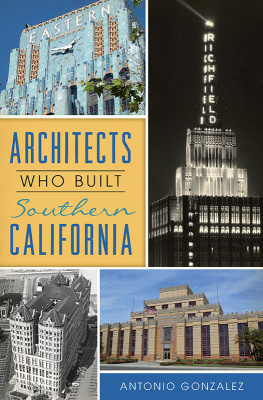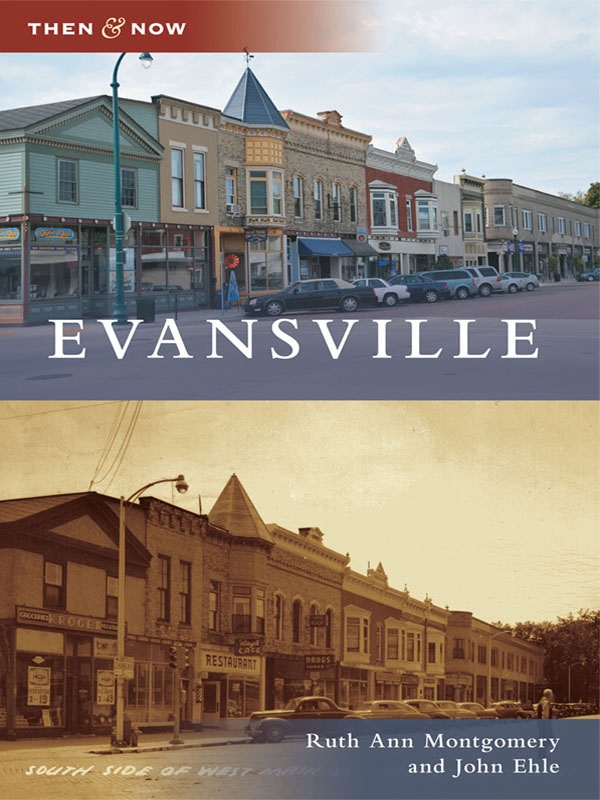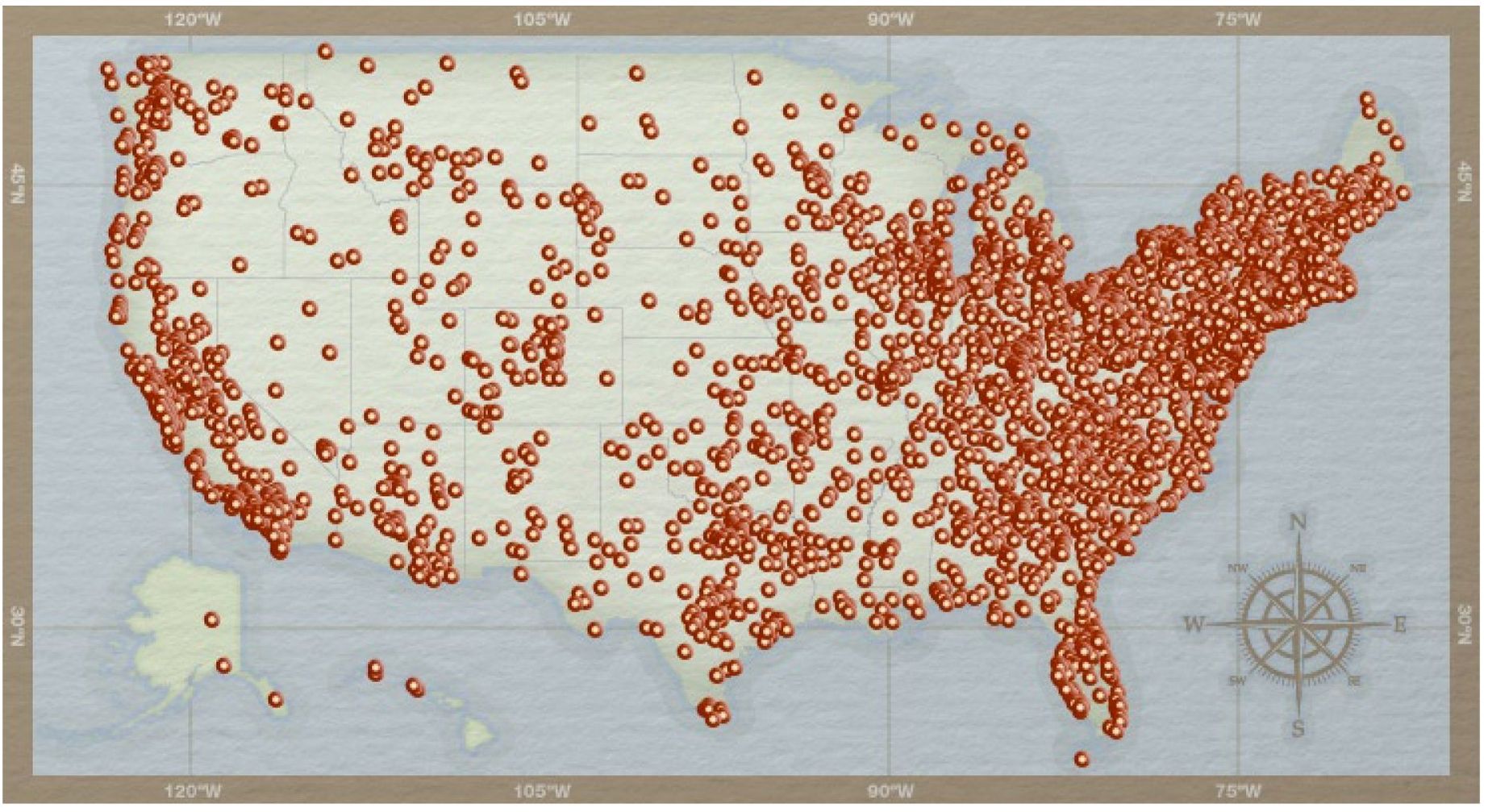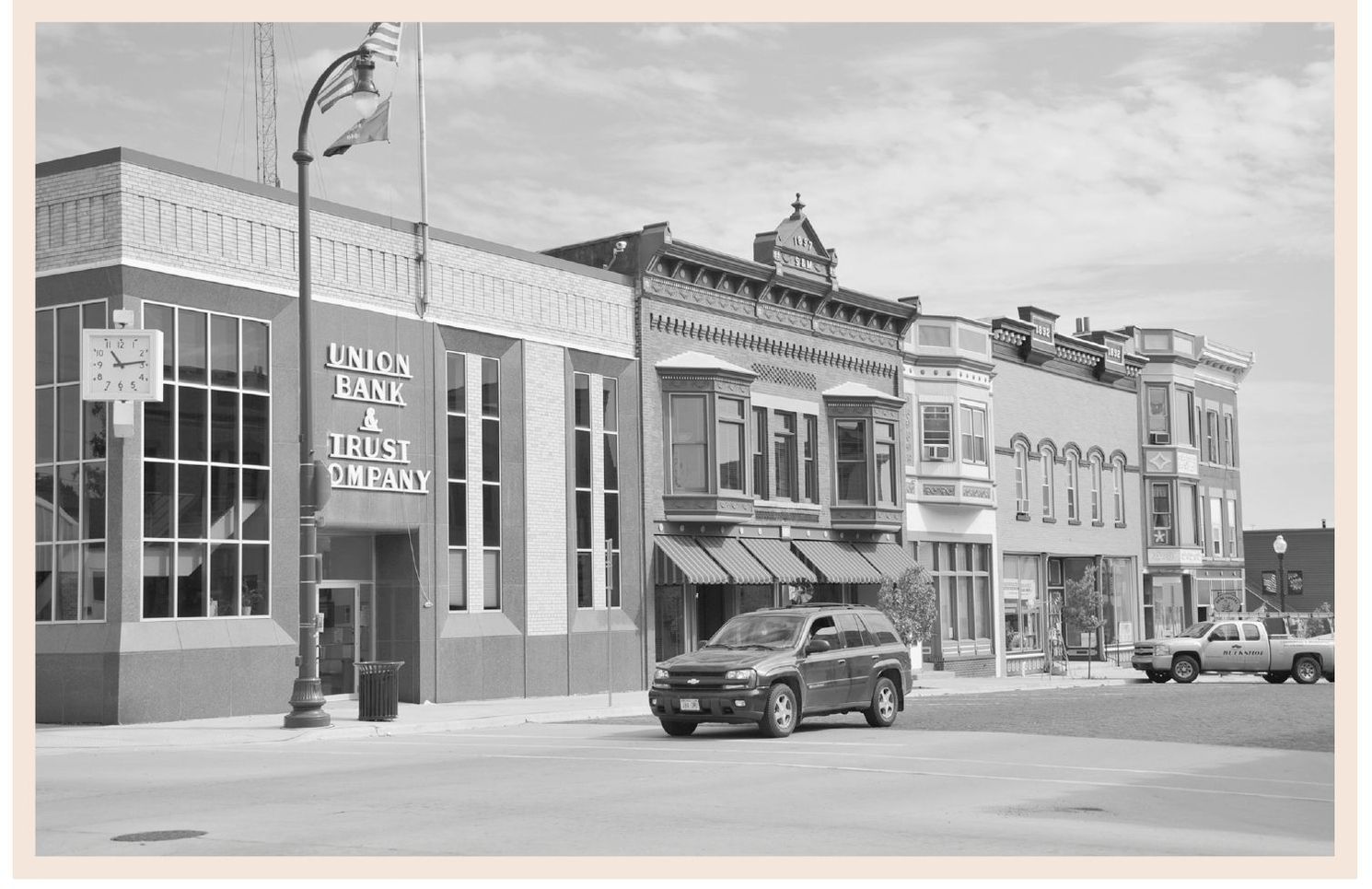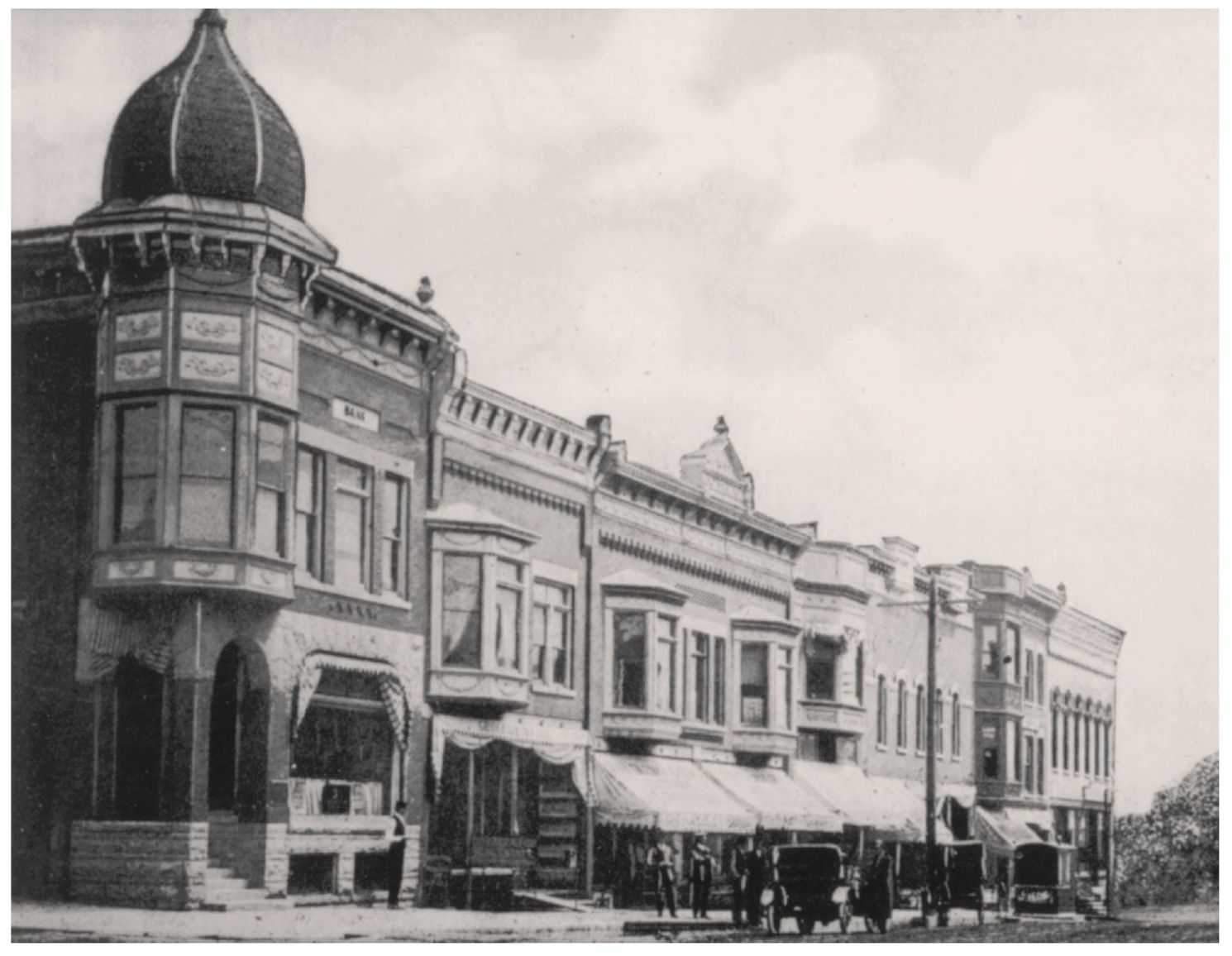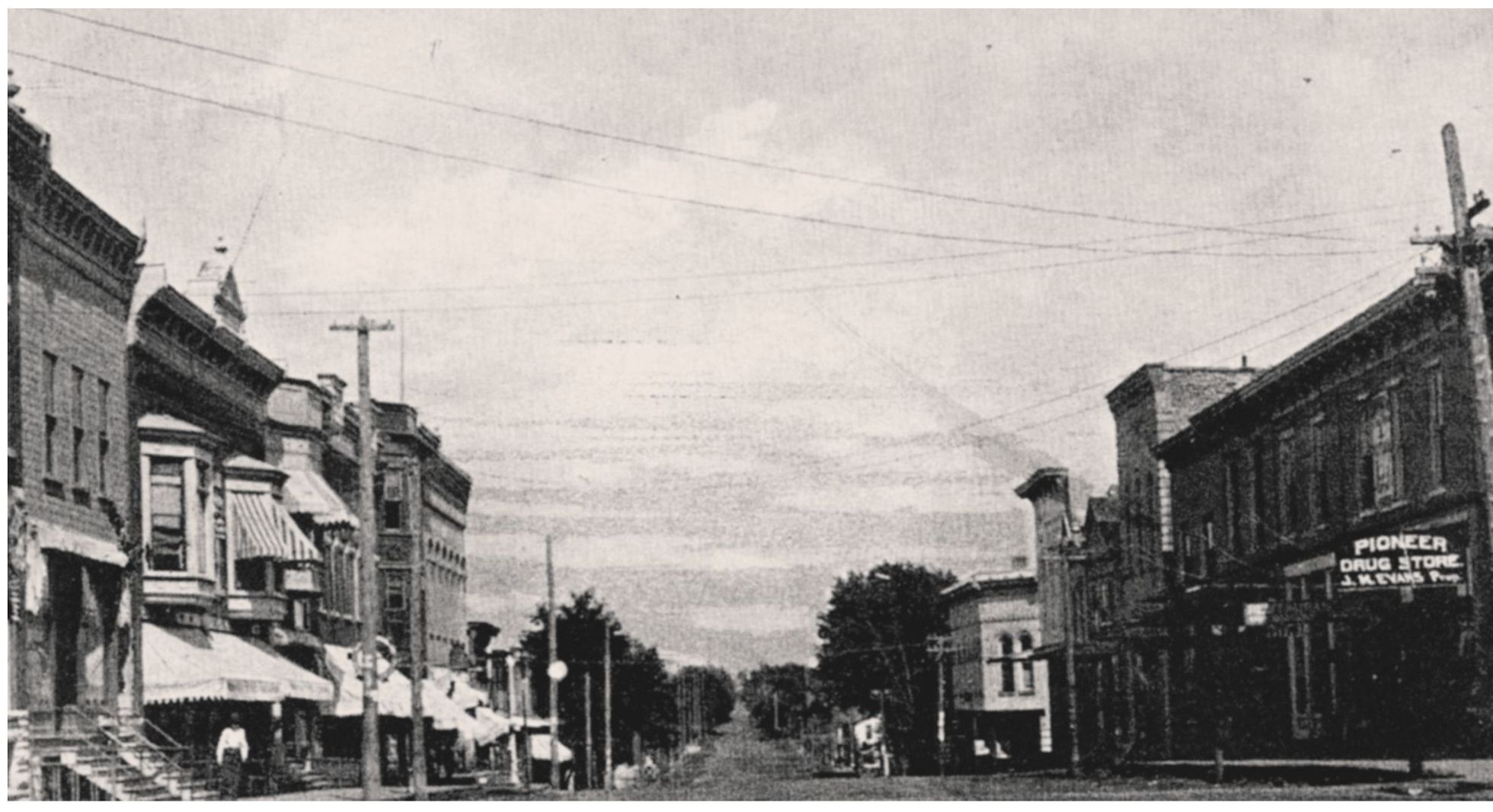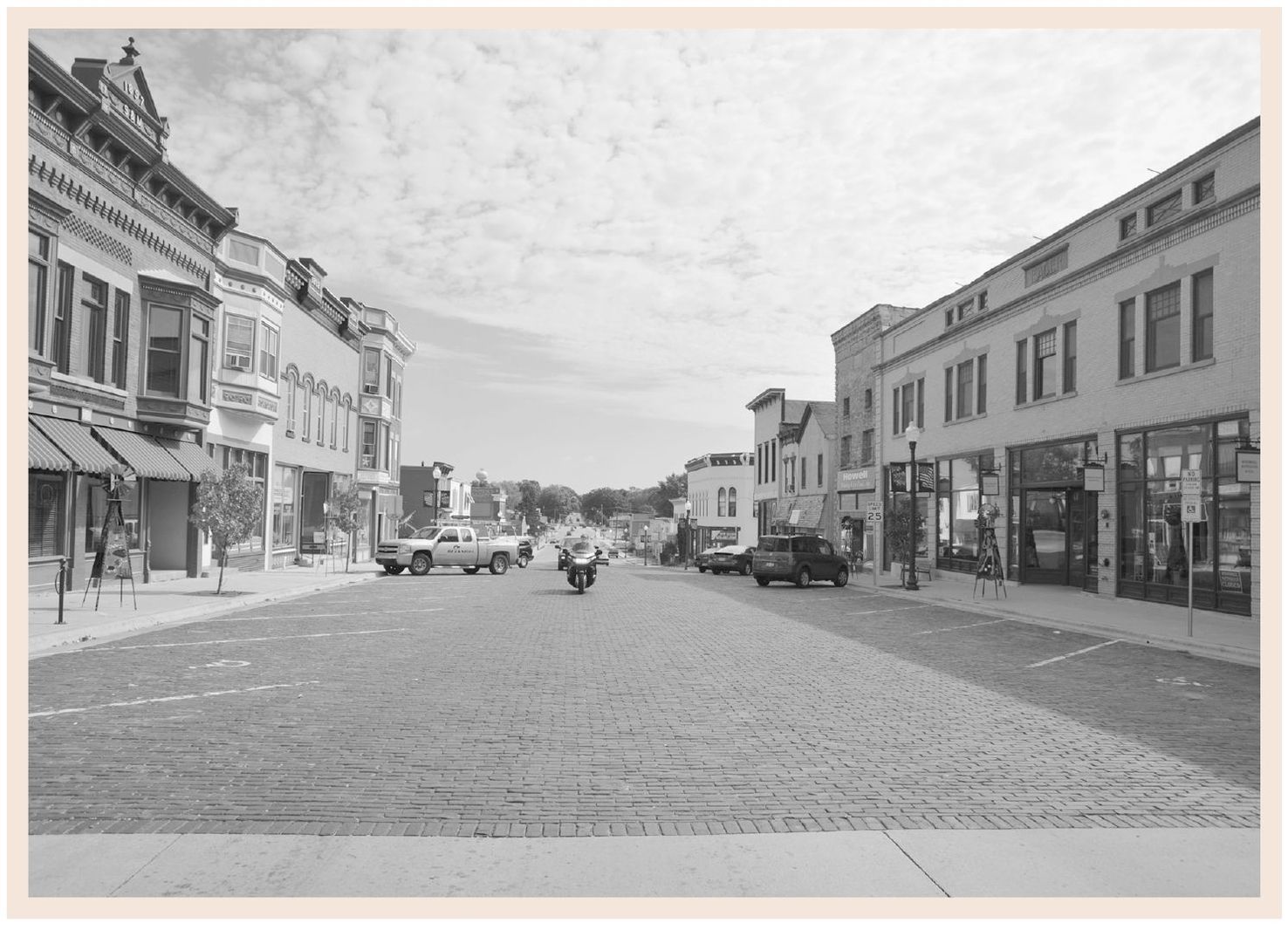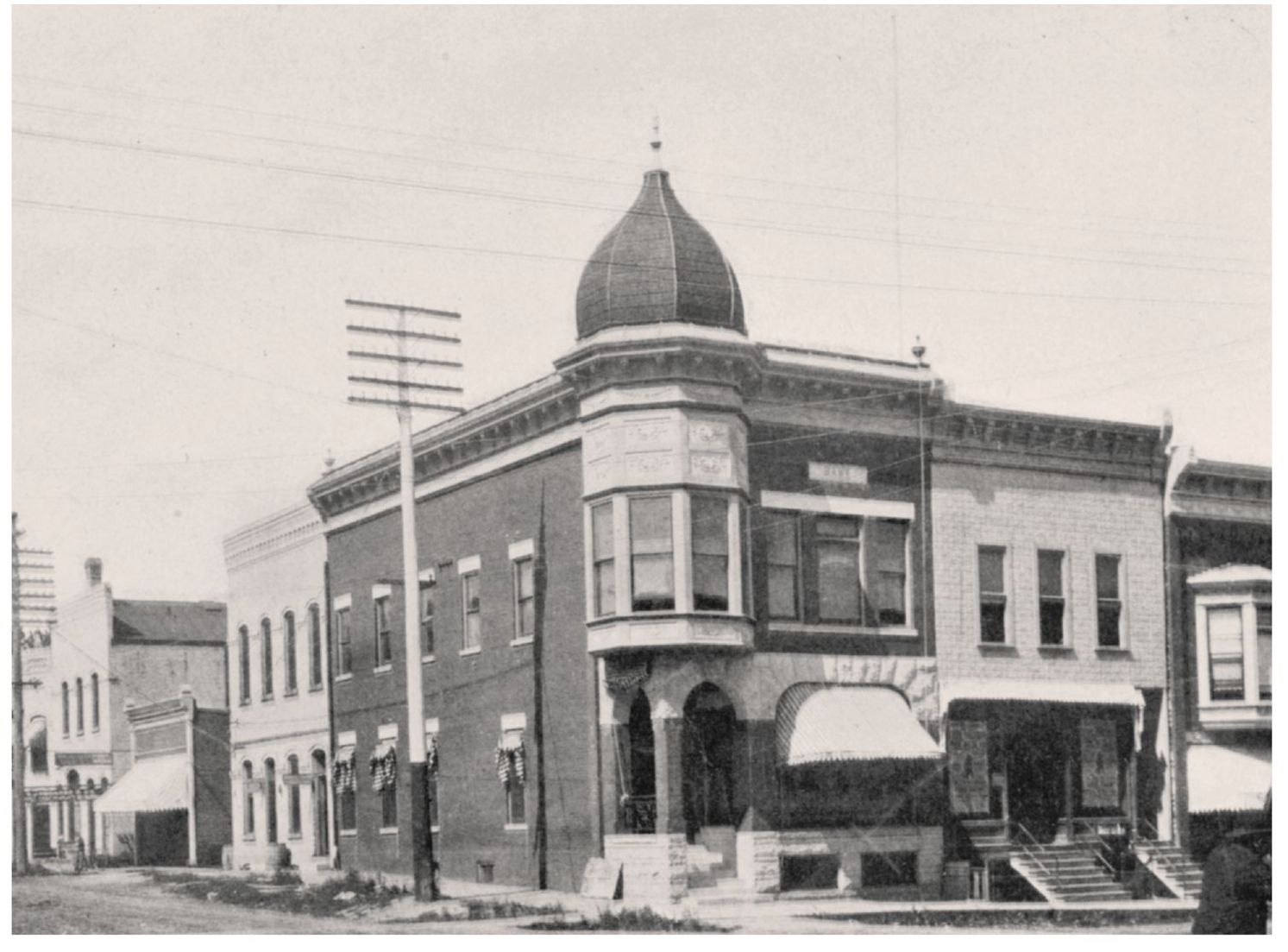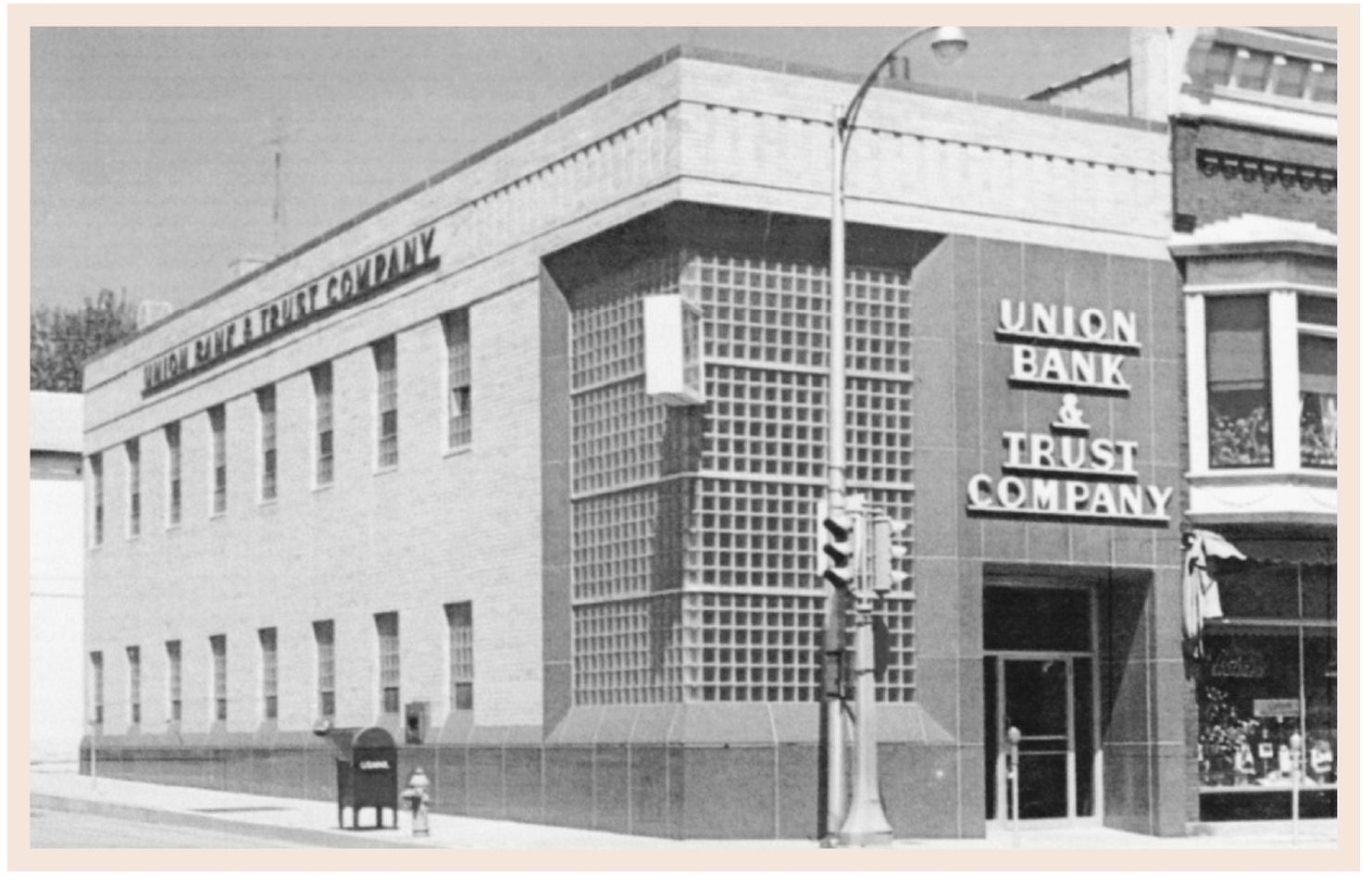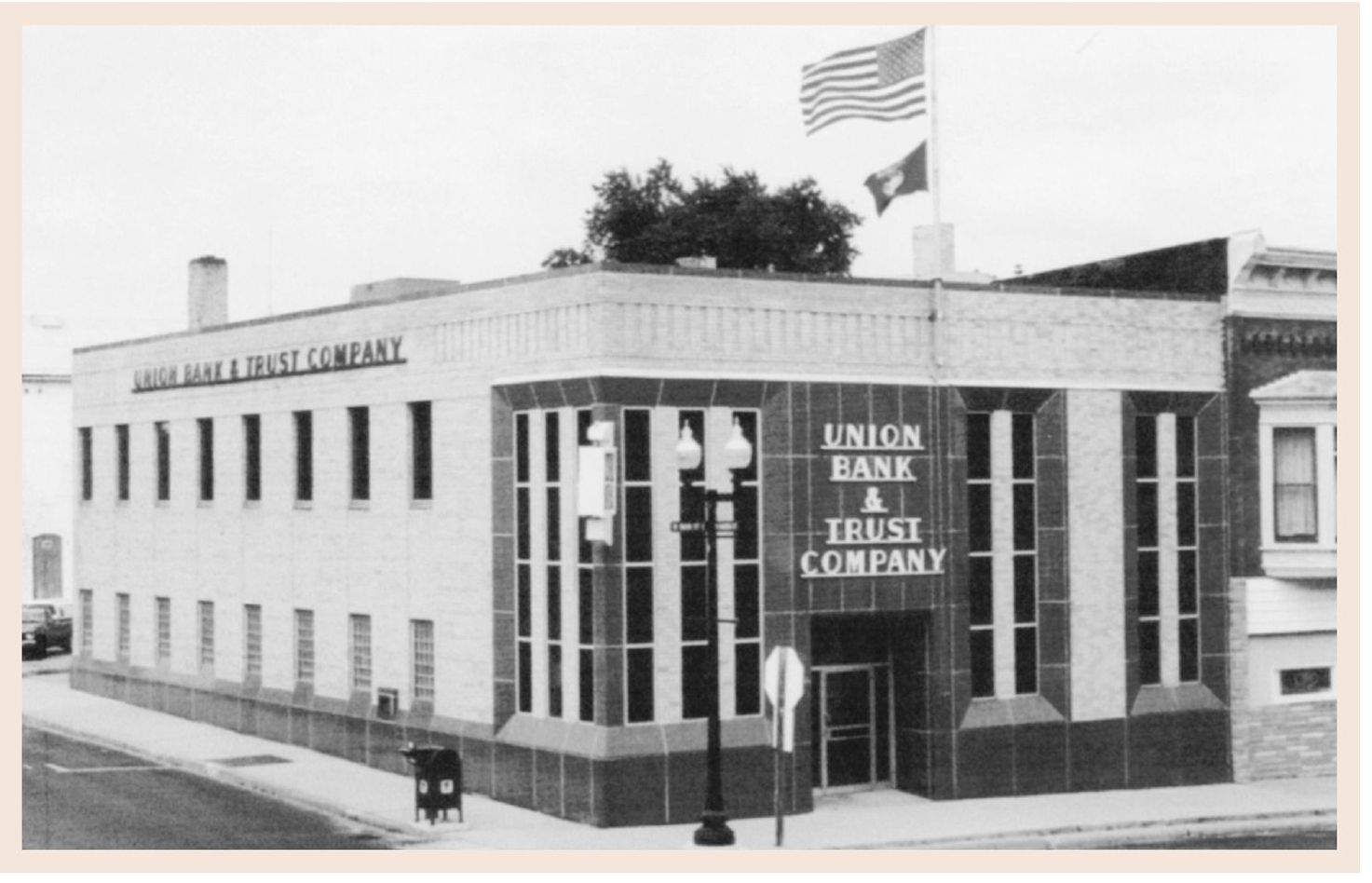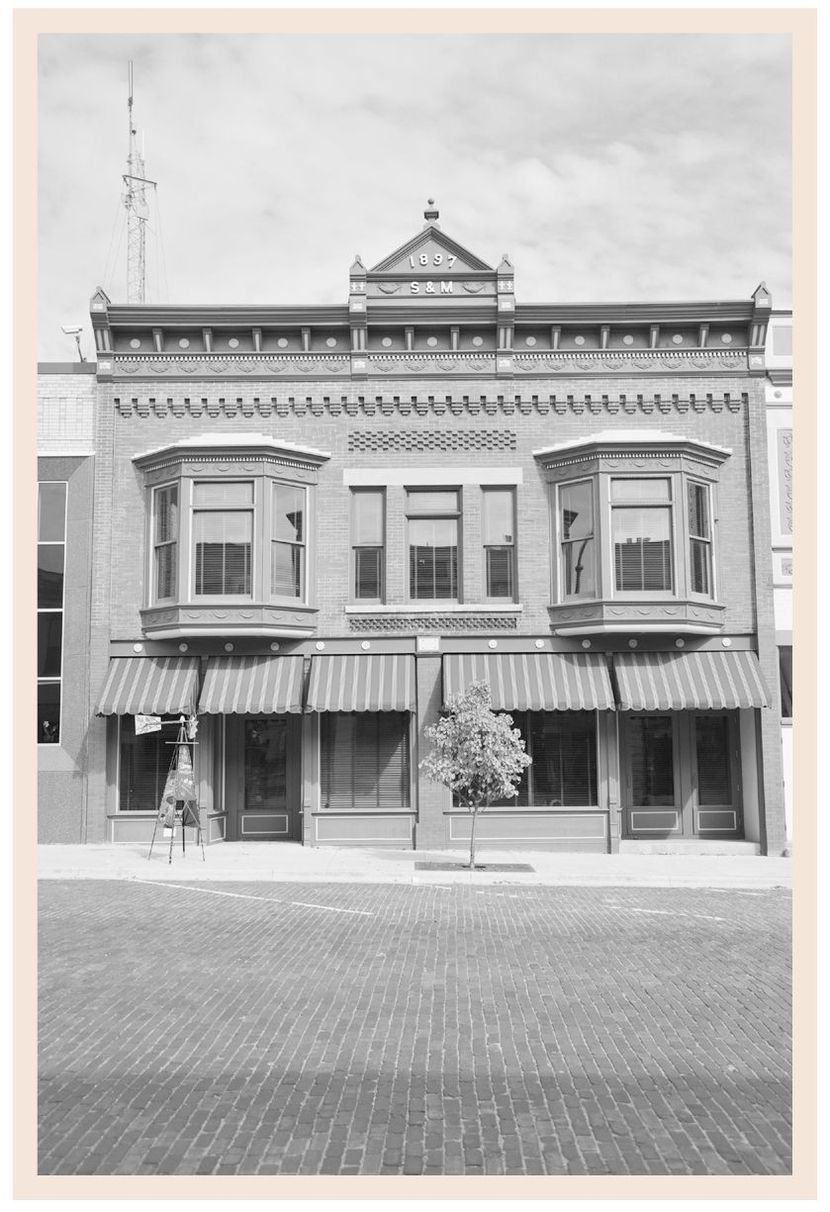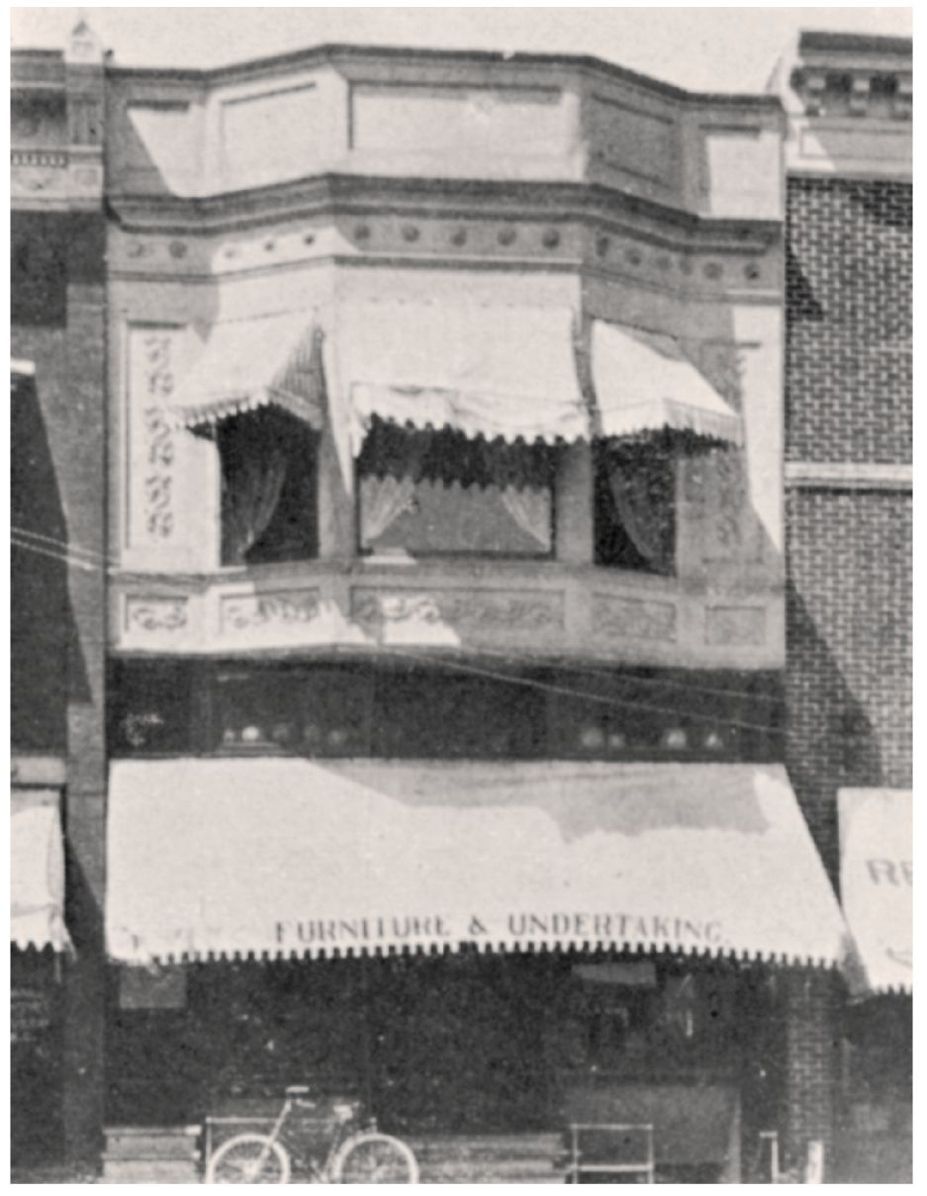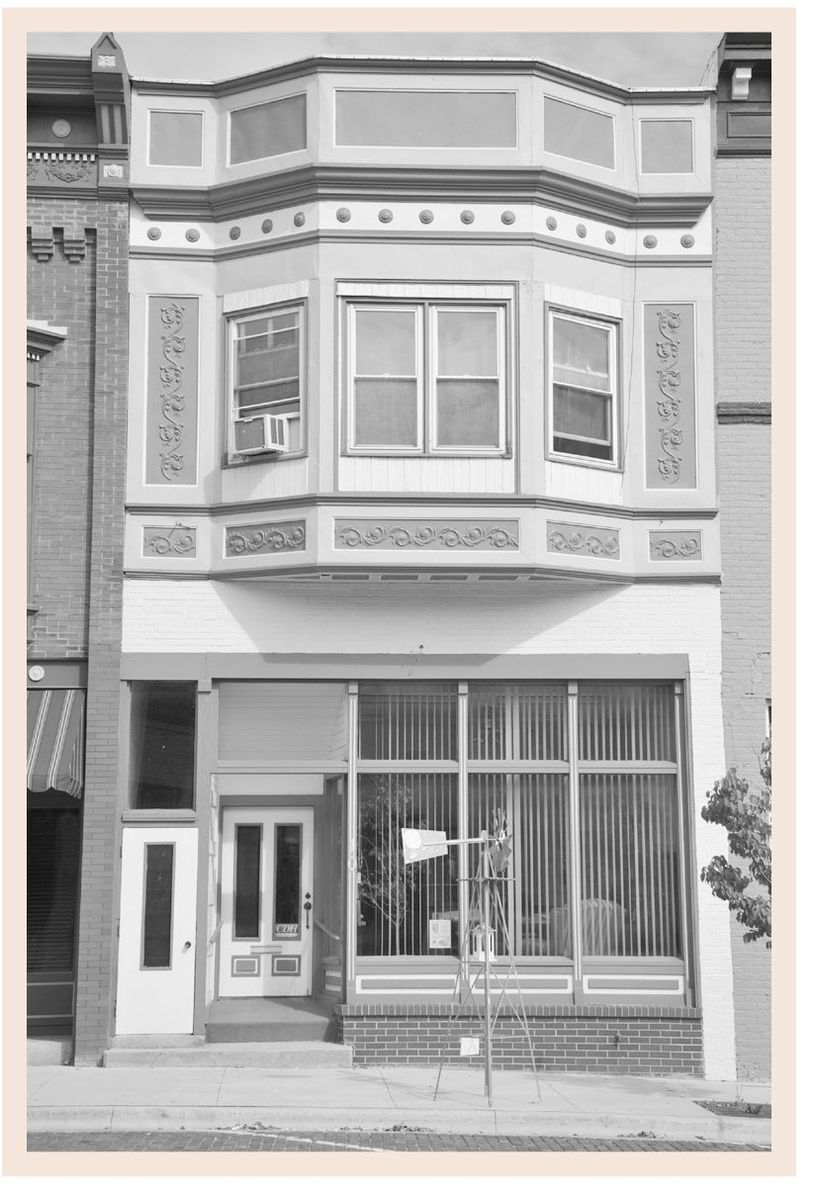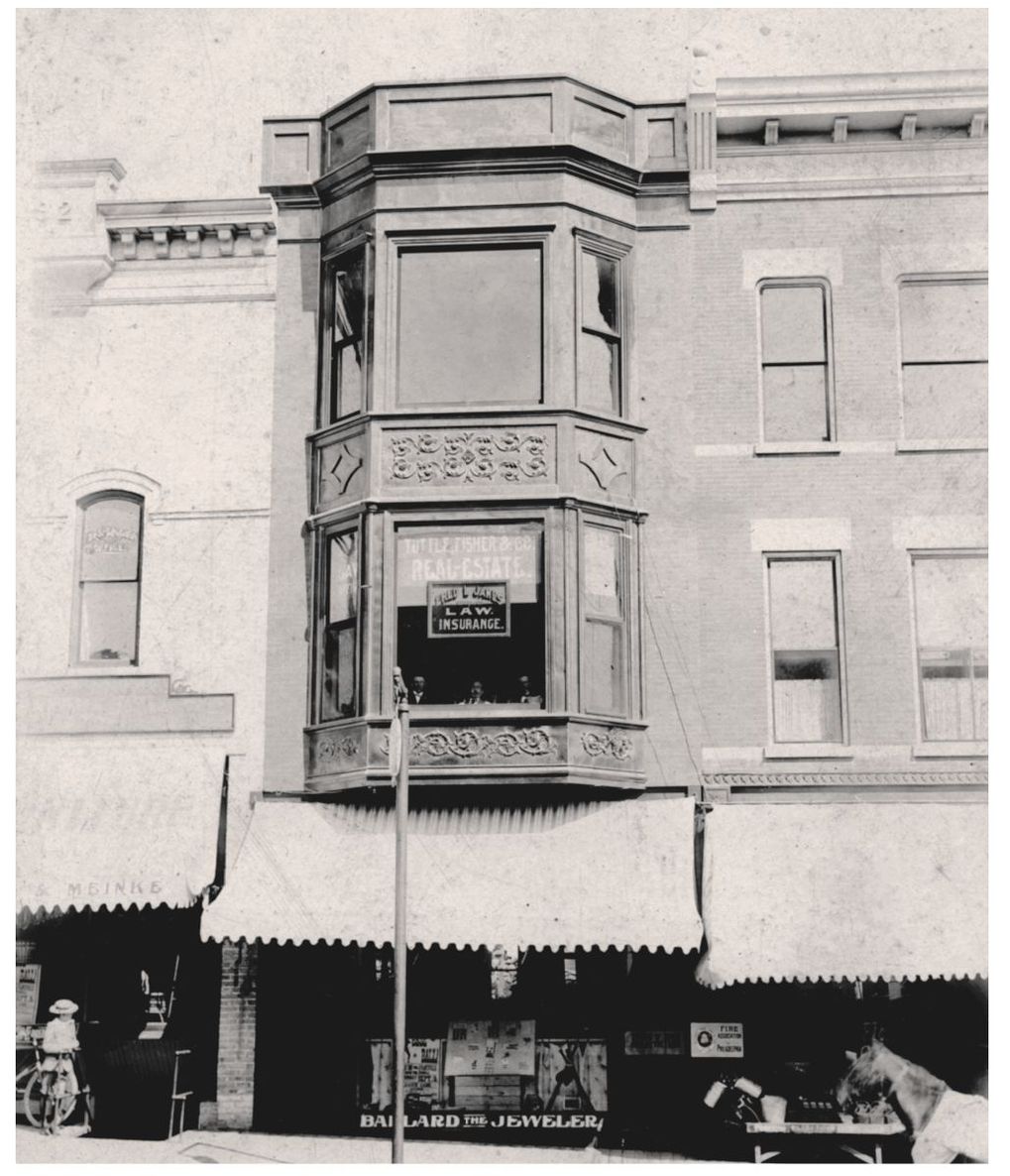CHAPTER 1
EAST MAIN STREET
Evansvilles East Main Street was bustling with activity when this photograph was taken before 1904. The first stores were built in the first block of East Main Street. Evansvilles Main Street was the trading center not only for the village, but for the farming community surrounding Evansville.
In the early 1900s, Evansvilles East Main Street was a model of an early-20th-century business district. Financial, commercial, and entertainment enterprises operated on the north side of the first block. From left to right are the Bank of Evansville, a grocery, Gillmans clothing, Biglows Furniture and Undertaking, Shiveleys block, Ballard Jewelry, and the Magee Opera House. Union Bank and Trust now occupies the first three buildings on the left; the Magee Opera House was razed.
A mix of commercial space, apartments, and club rooms for social organizations was found on East Main Street when the photograph was taken before 1904.The large block of two-story buildings on the right was razed or moved in 1904. The dismantling of the wood-frame buildings included the remains of the earliest Methodist church. In 1904, William Meggott designed and supervised the building of the Eager block, shown in the 2009 photograph. (Then image courtesy of Willoughby.)
Established in 1870, the Bank of Evansville was Evansvilles first bank. Lloyd T. Pullens general store on the northeast corner of Main and Madison Streets was remodeled for the bank. The bank became Union Bank and Trust in the 1930s. It was remodeled in 19511952. The architect was Marlow Ihling of the firm A. Moorman and Company of Minneapolis. Martin Roth of Mauston, Wisconsin, was the contractor. The building used a brown granite foundation and Hebron, North Dakota, brick.
For many years after the Great Depression, Union Bank and Trust Company was Evansvilles only bank. In 1968, an addition doubled the size of the building. The store at 4 East Main Street was razed. It had been a theater, a grocery store, a pool hall, and a liquor store. The 1968 photograph shows the store being torn down to make way for the bank expansion visible in the now photograph. Roth Brothers of Mauston was the general contractor. (Then image courtesy of Luers.)
The extension of the Union Bank and Trust Company in 1968 was followed in 2000 by another expansion. The bank purchased the building at 6 and 8 East Main Street, the Snashall and Mygatt building that had been a hardware store, clothing store, and tavern. The building was gutted, and new bank offices and a large meeting room were added. Only the restored 1897 facade of the Snashall and Mygatt hardware store remained.
Jacob West, one of Evansvilles earliest settlers, first owned the land at 10 East Main Street. When West built his store, it was one of three general stores in Evansville. In 1848, Wests building served as the site of the first post office. After various owners, Walter F. Biglow purchased the store as a furniture store and funeral parlor. The early photograph appeared in the 1900 brochure Glimpses of Evansville. It has recently been office space.
Built in 1885, the three-story structure at 16 East Main Street, known as the Copper Front Building, was photographed for the 1900 Glimpses of Evansville. The owner, Marshall Fisher, was a successful real estate agent. The second story was Fishers office. He shared space with Fred Janess law office. The first floor was a jewelry store operated by Ernest Ballard and later by Joseph Straka and his son Rowland. Since the 1970s, the first floor of the building has been a beauty salon.

